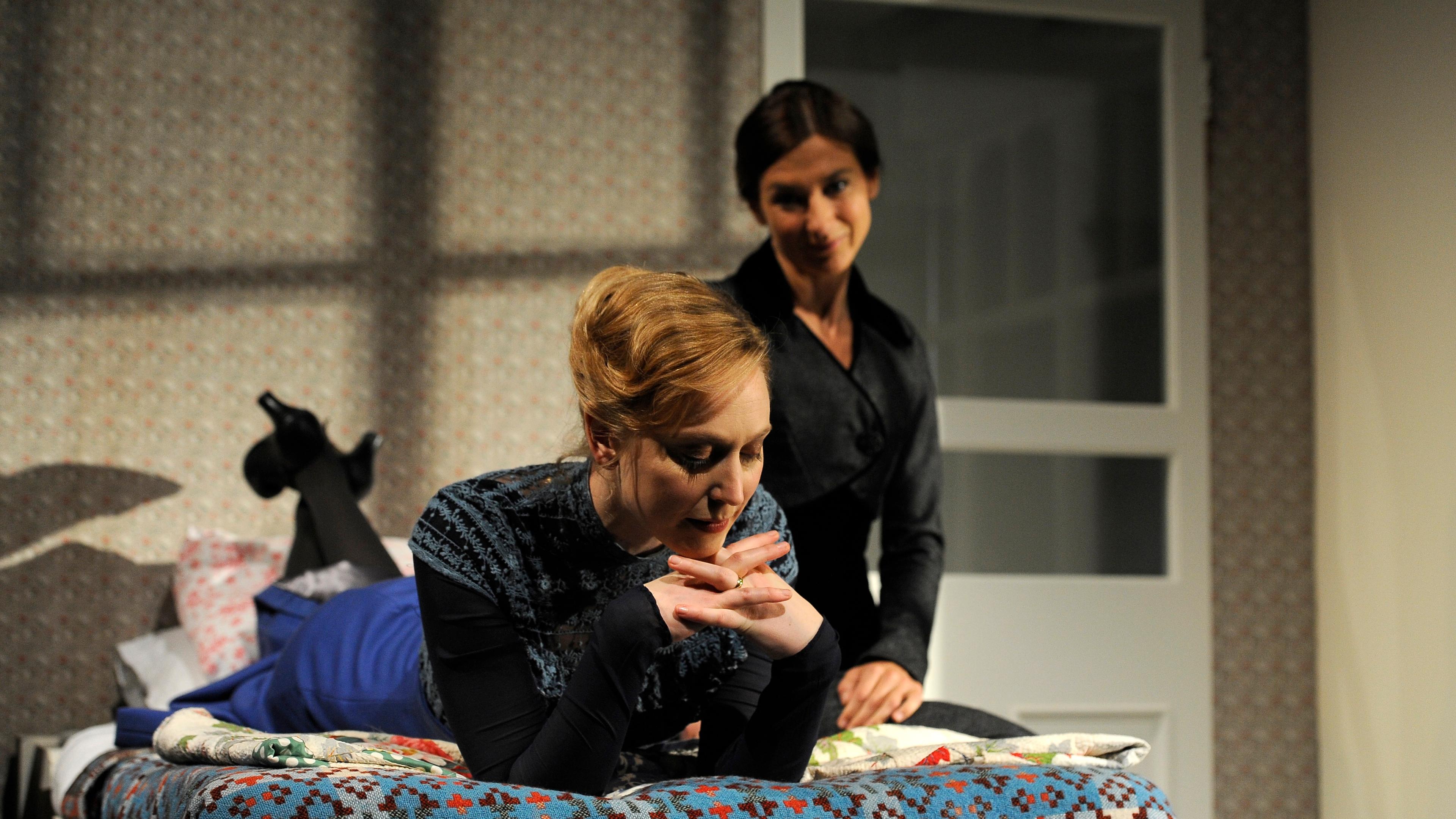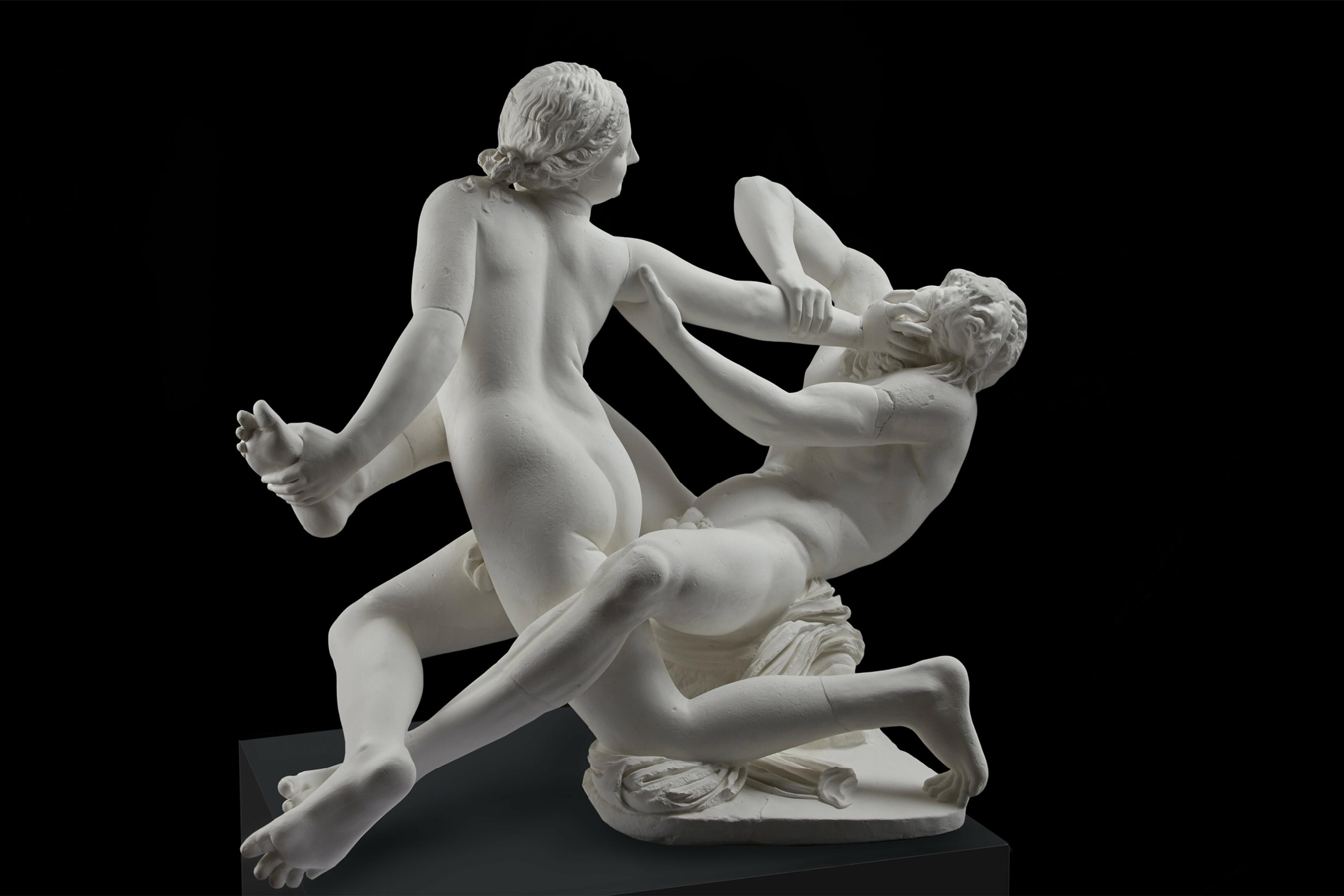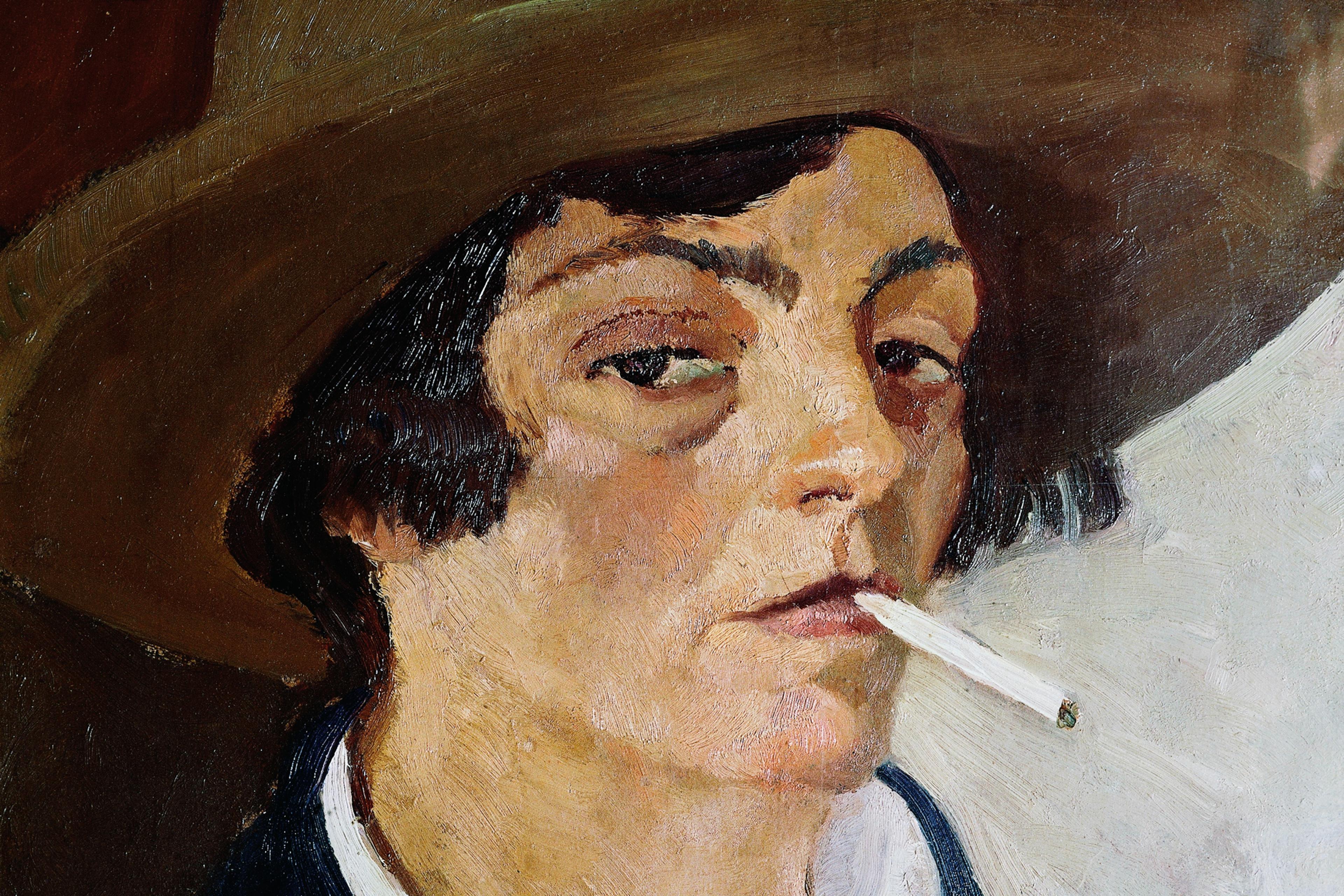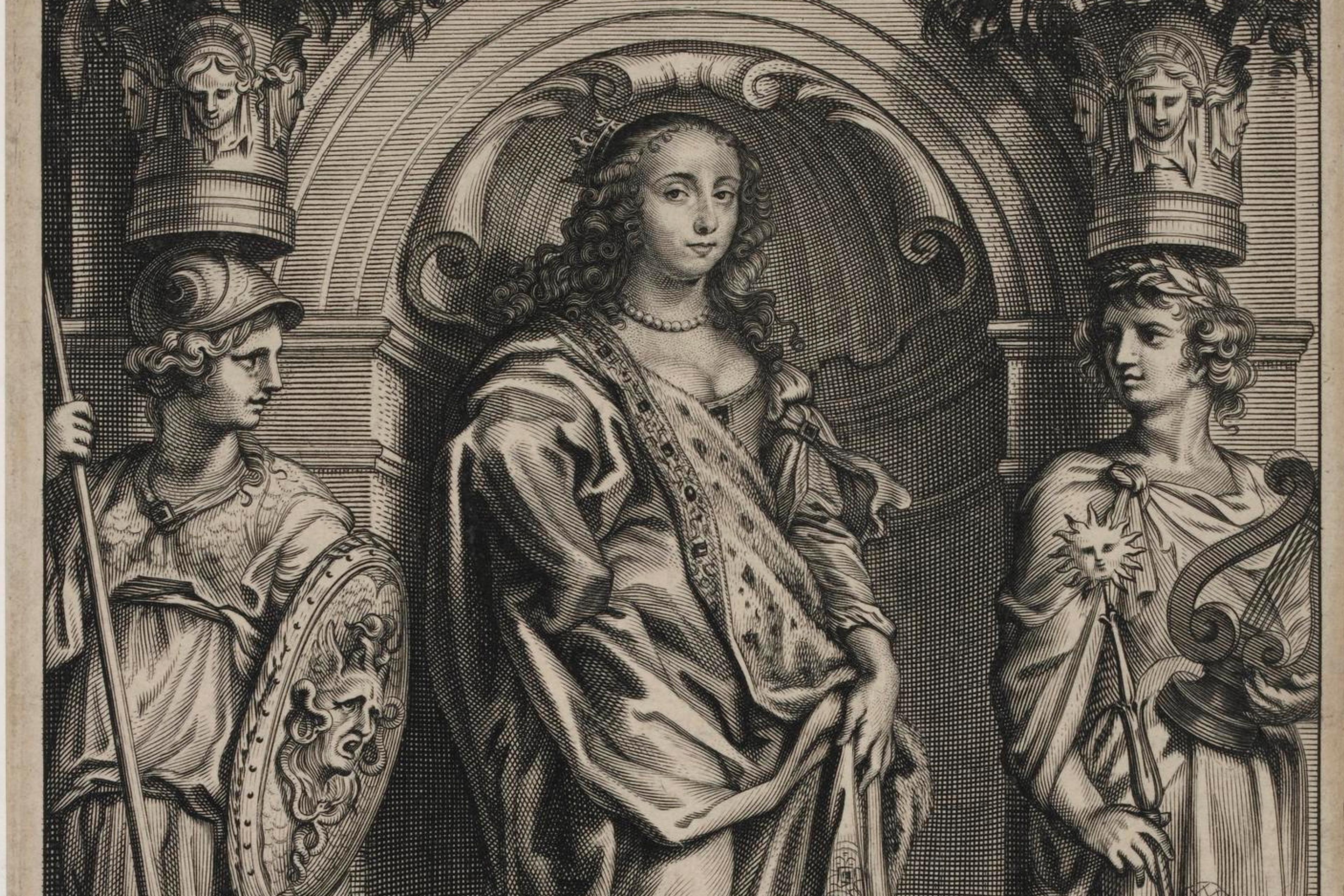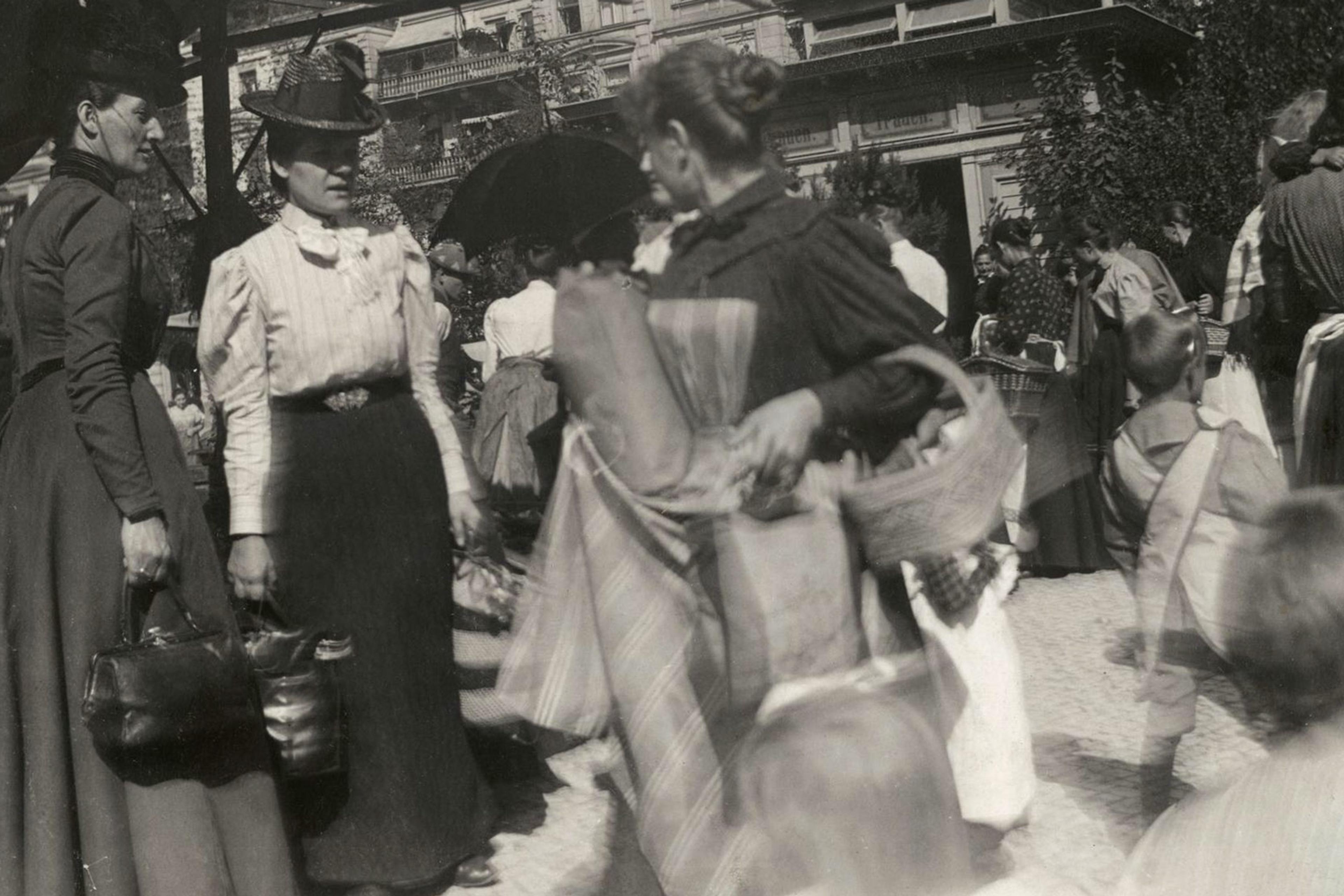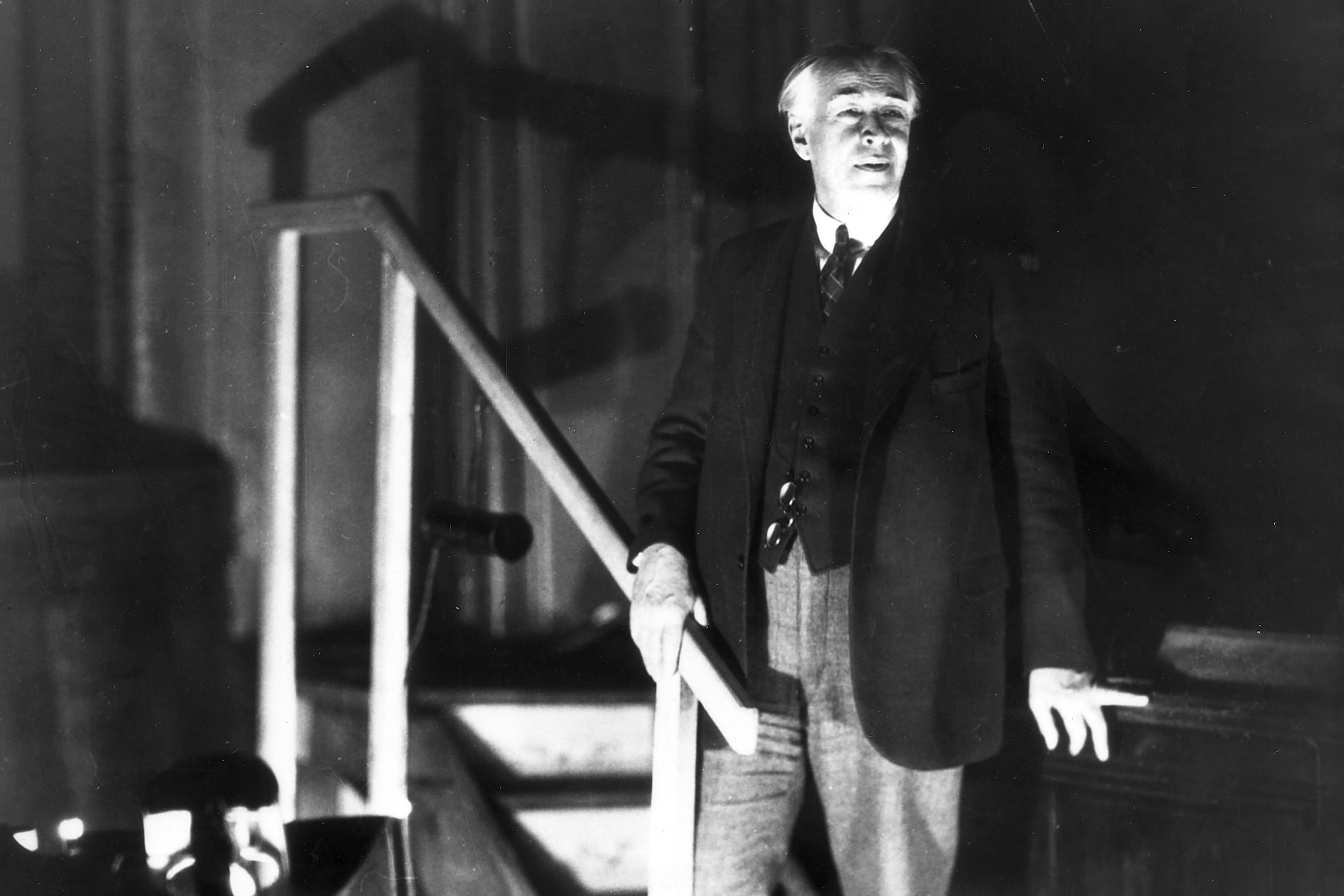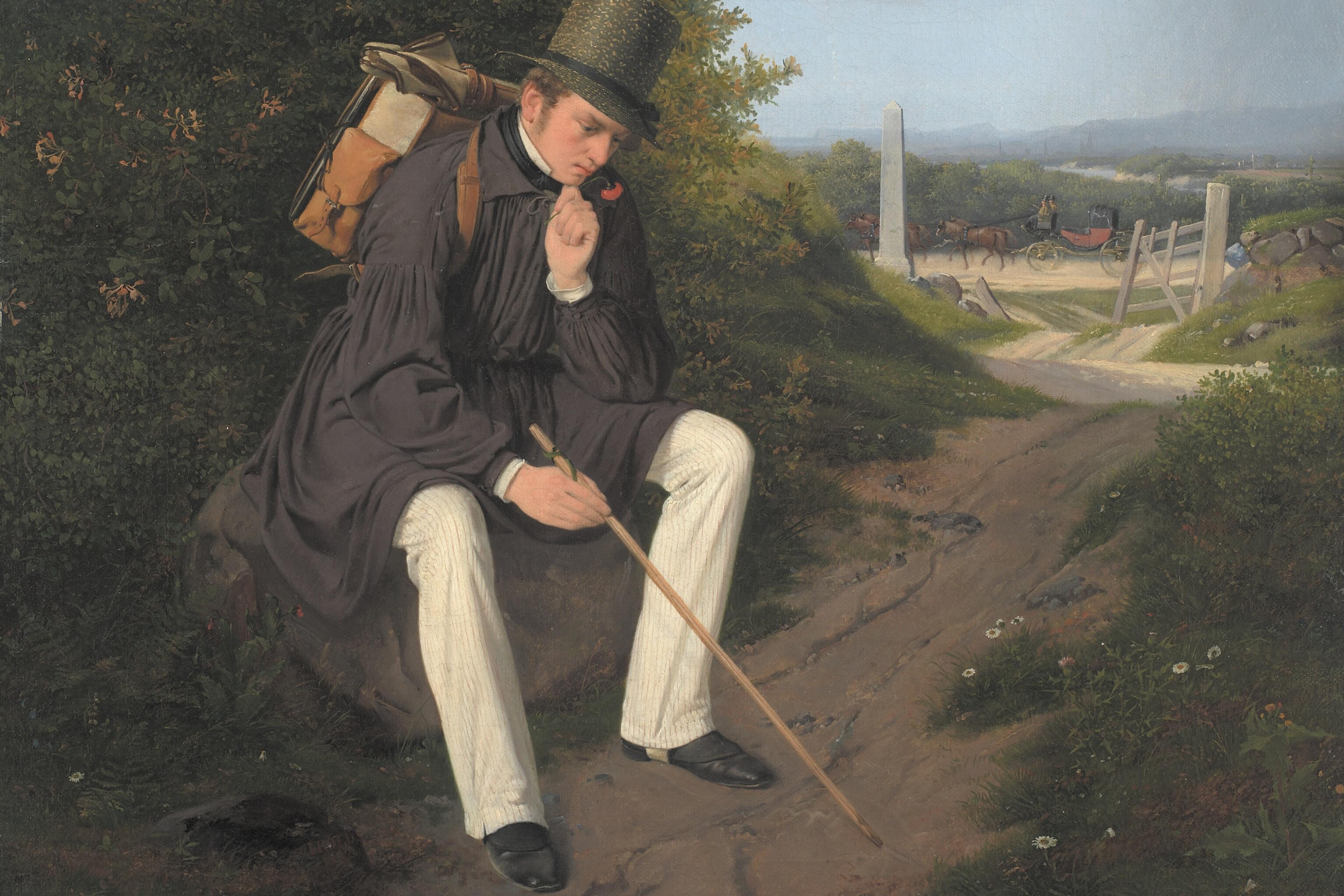‘A Søren Kierkegaard in skirts’ – this was one of the reactions that met Henrik Ibsen upon the premiere of his best-known play, A Doll’s House (1879). Make no mistake: the comment was meant to be a damning criticism. The play’s protagonist, Nora, discovers that, throughout her entire life, she has been treated as a doll rather than a human being. It is time she takes care of herself and her education; in order to do so, she is ready to leave behind her husband and children, and the last parts of the play especially follow the dialogues and reflections leading up to this decision. Nora’s leaving caused furore among 19th-century audiences. However, it was Nora’s philosophical bent that the reviewer had picked up on. What, after all, could be more ridiculous for that period’s audience than a philosopher in skirts?
From Ibsen’s point of view, the answer was obvious. Quite often, what is more ridiculous than a philosopher trying to be herself in a skirt is a philosopher who, whether or not he is garbed in a traditional male outfit, clings to the stilts of abstract principles and empty academic conventions. With his reflective new women (Nora is not alone!) and his many lofty and categorical male thinkers, Ibsen fuses philosophy and gender perspectives at a time when women, on a larger scale, were starting to demand access to academia and to culture and politics more broadly. Two topics that do not often merge – that of women in philosophy, and that of philosophy and theatre – are fascinatingly intertwined in Ibsen’s drama.
One may ask why a playwright of Ibsen’s calibre – popular in his lifetime, and still among the most staged dramatists of all times – would have an interest in philosophy in the first place. The answer is that, in Ibsen’s world, philosophy and theatre were curiously connected. Leading directors and critics turned to philosophy to get the intellectual tools needed to think through their art. In Copenhagen, the dramatist and director Johan Ludvig Heiberg was a hardcore Hegelian, while the critic Georg Brandes was a Romantic-cum-Hegelian, who would later turn to Nietzsche. Playwrights were testing out philosophical ideas on stage: should theatre be realist? What is realism? What is truth? And morality? Philosophers, in turn, were thinking systematically about the nature of drama: should it be for pleasure or education? They also thought about what were morally acceptable topics to put on stage. In 18th-century France, Jean-Jacques Rousseau and Denis Diderot had both addressed this topic. A bit later, and in a German-speaking context, the focus was somewhat different. Gotthold Ephraim Lessing put philosophy of theatre on the agenda but was also the first in-house dramaturg at the grand new theatre in Hamburg. Friedrich Schlegel, G W F Hegel and Friedrich Nietzsche all made drama a central part of their philosophies. There was a new interest in the way a drama itself could stage philosophy – that is, be philosophical in the way it presented different life-views and ideas on stage through dialogues or shared introspection (Hamlet’s soliloquies!).
It is no wonder, then, that Ibsen’s plays are populated by figures of a philosophical disposition. The philosophers were already part of the world of theatre and drama that he wanted to inhabit. In his early prose work, he comments on Lessing and enters the philosophical discussion of Shakespeare. Yet the male philosophers in Ibsen’s plays do not fare well. In fact, they are a bunch of ramshackle figures – adding either sheer comedy or making the audiences cringe with their hopelessly inflexible orientation towards eternal ideas and principles.
For example, in Brand (1866), the eponymous priest is willing to sacrifice everything – including his child, the church he has built, and his congregation – in a desperately twisted Kierkegaardian effort to prove a faith that goes beyond the demands of reasons. Brand is definitely more tragic than comical, though the play is not without humorous elements. Among Ibsen’s clearly comical figures is Dr Begriffenfeldt, the would-be Hegelian in Peer Gynt (1867), who enters the stage and talks about ‘Absolute Reason’, yet turns out to be the director of a madhouse, and is possibly quite mad himself.
In Hedda Gabler (1890), Ejlert Løvborg comes across as a Nietzschean historian. He is obsessed with the question of whether history can yield existential meaning, and even seeks to write a grand history of the future. Nothing much comes of this. He loses his manuscript during a drinking bout, his former lover Hedda gets her hands on it and throws it in the fire. She is, no doubt, frustrated by the gap between Løvborg’s obsession with his magnum opus, on the one hand, and by his own inability to hold it together, on the other.
In An Enemy of the People (1882), the disillusioned Dr Thomas Stockmann makes a note to himself – after ample reflections on politics, science and public opinion, and having been chased down by a mob – that one should never stage a social revolution in one’s best trousers. Both Gregers Werle and Dr Relling in The Wild Duck (1884) are amateur philosophers. The former lives by a fanatic obsession with the ideal. The latter professes an equally obsessive pragmatism – one that has him declare that, if you take away the life-lie from your average man, you take away his happiness. Little Eyolf (1894) features Alfred Allmers, another idealist-cum-dreamer.
Ibsen parades an assembly of ramshackle philosophical figures. They live by inflated abstractions and ideas that have been cut loose from an ordinary existence; they are unable to appreciate even the most basic features of the world and the people around them; and the comical (or tragic) effect is typically brought about when they encounter the real world. But these philosophers are all safely dressed in male garb. What, then, about the philosophers in skirts? Do Ibsen’s female characters, who take the stage with their bold philosophising, present philosophy in a different voice?

Henrik Ibsen (1879) by Henrik Olrik. Courtesy the National Museum, Oslo
Women could not be academic philosophers in Ibsen’s time. He died in 1906. In Germany, where Ibsen spent a long period, it would be decades before the first woman philosopher (Liselotte Richter) was awarded a habilitation, the PhD title that qualifies for academic positions in Europe. In the world as Ibsen knew it, women philosophers were barred from full participation in academia and therefore also from the kind of small-minded job rivalry that we encounter in Hedda Gabler, or the quest for peer-recognition that we find in An Enemy of the People. Yet women in this period did indeed publish philosophy – they published a lot. And what they published was not, usually, narrow academic philosophy, but philosophies that were written for a larger audience, that addressed relevant topics of the time: the soul-destroying effects of internalised bias; the idealists’ tendency to conceive of basic, human freedom without accounting for how laws and social practices prevent women from realising their freedom; the blatant misogyny of philosophers such as Arthur Schopenhauer and Nietzsche; the move from mind-body dualism to a larger notion of life that art, in particular, could celebrate. Ibsen knew the works of these women. Moreover, many of them also published drama – Germaine de Staël, Karoline von Günderrode, Hedwig Dohm and Lou Andreas-Salomé among them. Salomé even published an early study of Ibsen’s women characters – ‘Ibsen’s heroines’, as she called them.
In Ibsen’s native Norway, there were women who clearly had a knack for philosophy. Hulda Garborg, married to the writer Arne Garborg, had published a study of Rousseau’s theory of education. She hosted Salomé during the latter’s travels in Scandinavia. Ibsen corresponded with Salomé. He was also close to Camilla Collett, who had taken an explicit interest in women philosophers in Europe, including de Staël, Bettina Brentano von Arnim and Fanny Lewald – and indeed was, in her essays, nothing short of a formidable philosopher herself. Women were active contributors to the early debate around Nietzsche’s work both in Germany and in Scandinavia. Salomé, Dohm, Ellen Key, and Laura Marholm were important voices in this context. His friend Brandes had translated John Stuart Mill’s The Subjection of Women to Danish in 1869, and eagerly celebrated the work of de Staël in his study of emigrant literature. Ibsen seems to have borrowed a number of images from de Staël (eg, Nora’s reference to herself as a doll). Meanwhile, the image of the hypocrite pastor in Ghosts (1881) is said to have been borrowed from Dohm. And Lona Hessel, in The Pillars of the Community (1877), is modelled after Aasta Hansteen, a trail-blazing Norwegian feminist and thinker. Spending time in Boston, Hansteen writes to Ibsen that she had intended to move the rock that kept women trapped and hampered their development as human beings… only to realise that the rock was an entire mountain that simply would not budge.
These women were original thinkers whose contributions cannot be summed up under any -ism starting with the name of a male colleague. And Ibsen knew their works. When he stages his philosophers in skirts, he clearly knows what he is up to and isn’t doing it to demean them. Instead, his women characters present the audiences with a different kind of philosophy, one that is concrete, relevant and intertwined with the social and existential challenges they encounter. These protagonists do not theorise or talk about philosophy – they live it out on stage.
In A Doll’s House, Nora transitions from being a mere plaything for her male relatives (her father, her husband) to realising that she can no longer allow herself to be satisfied with what most people say and what is written in books. Instead, she wants to ‘get an understanding of them,’ as she puts it in the final act. In Ghosts, Ibsen’s next play, Helene Alving is presented, from Act One, as a sophisticated reader. She is gradually more appreciative of her son’s (Nietzschean) ideas of life-affirmation, and defends her interest in new ideas against her conservative pastor’s objections. In An Enemy of the People, Petra is not only a teacher but also the one who, educated, independent and clear-sighted, will help her fallen father take on the tasks of educational reform and social change.
If Ibsen’s male philosophers are self-centred, distracted, even self-destructive, his women characters play out ideas and positions on stage, and often pay the costs of their male counterparts’ rigidly conceived projects. Ibsen’s point is not to explore some kind of gender essentialism in thinking but to look for examples of a philosophy that is not hemmed in by academic conventions or grand system-building. Only such a thinking can sustain an open-ended and energising relation to life. This is the kind of thinking that had, in the first place, supported the mutual relationship between philosophy and theatre. In Ibsen’s world, it was the women philosophers who represented such energising new voices.
Hence it makes sense that, in his drama, Ibsen uses his female characters to introduce this kind of philosophy – to practise it, as it were, theatrically. At the same time, he offers his audiences examples of intelligent and articulate women who raise philosophical issues, discuss ideas, and thus offer examples of the new woman. This puts Ibsen in a unique position. It makes him different from other realist and naturalist writers who portray unhappy, agent-less women and their existential demise in the face of repressive social expectations. It also makes him different from philosophers such as Johann Gottlieb Fichte, Hegel, Schopenhauer and Nietzsche – all of whom doubted the intellectual capacity of women.
Ibsen, though, would get the last word. The philosophy of the future would include the philosophers in skirts – not because, for Ibsen, the philosopher need be a woman (she need not). Instead, in Ibsen’s plays we get a sense that, in order to retain its connection to art and life, philosophy must include women’s voices, regardless of their being dressed in skirts, trousers or some other outfit.
